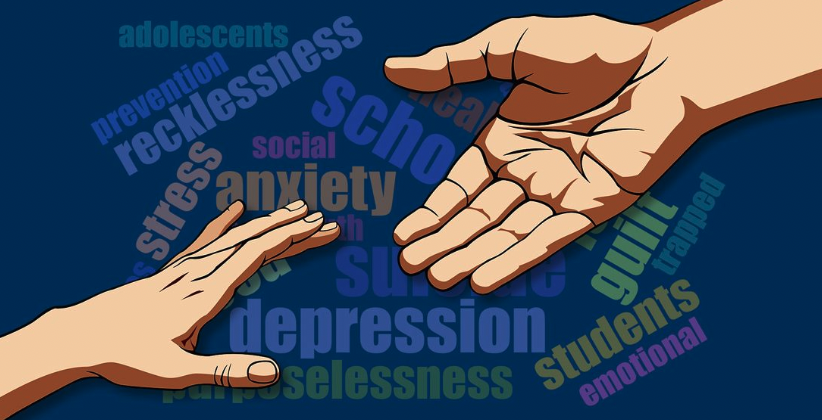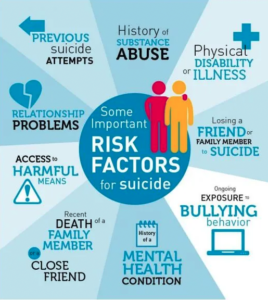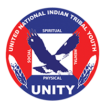
In the U.S., suicide is the 3rd leading cause of death for young people 10 to 24 years old. Suicide is the 2nd leading cause of death for AI/ANs 10-34 years old. But suicide can be prevented.
National Suicide Prevention Week is Monday through Sunday surrounding World Suicide Prevention Day, September 10th.
Here’s what you can do:
- Organize a candlelight ceremony or walk to remember those who have died by suicide.
- Organize a cultural or spiritual event to raise awareness about suicide.
- Organize a training at your school on suicide and depression…host a QPR training or TeenScreen event.
- Educate yourself about suicide and warning signs
- Visit the International Association for Suicide Prevention’s (IASP) webpage for more information, factsheets, and World Suicide Prevention day events worldwide: iasp.info
- Create a video about suicide prevention and post it on We R Native.
If you or someone you know is thinking about suicide, please call the National Suicide Prevention Lifeline at 1-800-273-TALK (8255).
Need more Ideas? Check out: Dosomething.org

WHY ADDRESS SUICIDE PREVENTION
- Many AI/AN communities experience an elevated suicide rate.1
- AI/AN communities may lack access to suicide prevention programs that meet their cultural needs.
HOW AI/AN COMMUNITIES CAN TAKE ACTION
The best way to prevent suicide is to use a culturally relevant, contextually driven, comprehensive approach that includes these key components:
- Promote culturally competent practices that increase protective factors and reduce risk.
- Connect the community’s resources to create a shared vision of wellness.
- Gather information from Elders and community members to gain knowledge and understand the issue of suicide in the community where you are working.
SUICIDE PREVENTION RESOURCES:
This section includes a list of federal agencies, organizations, articles, training materials, and resources on American Indian and Alaska Native suicide prevention.
Indian Health Services (IHS) Division of Behavioral Health
The IHS Division of Behavioral Health is responsible for IHS efforts to monitor, prevent, and treat mental and behavior health conditions, substance abuse and suicide prevention. The IHS Division of Behavioral Health website features sections on suicide prevention programs, best practices, collaborations and resources related to tribal suicide prevention.
Substance Abuse and Mental Health Services Administration Tribal Affairs
SAMHSA provides training and technical assistance to tribes, such as help with prevention program planning and Tribal Action Plan development. This web page highlights SAMHSA’s tribal affairs agenda and includes policies, working group activities, grant programs and publications and training and technical assistance resources related to tribal suicide prevention and mental health.
The Tribal TTA Center provides training and technical assistance (TTA) on mental and substance use disorders, suicide prevention, and the promotion of mental health. The Tribal TTA Center provides Broad, Focused, and Intensive TTA to federally recognized tribes, other American Indian/Alaska Native (AI/AN) communities, SAMHSA tribal grantees, and organizations serving Indian Country.
AMERICAN INDIAN AND ALASKA NATIVE ORGANIZATIONS
Suicide Prevention Resource Center American Indian and Alaska Native Website
The Suicide Prevention Resource Center (SPRC) American Indian and Alaska Native web pages are designed for individuals working with Native populations on suicide prevention and mental health promotion. These web pages include the basics of getting started, a best practices registry, a comprehensive library of data sources and publications, and sustaining efforts from Indian Country.
One Sky Center is a National Resource Center for American Indian and Alaska Native Health, Education and Research. It is dedicated to quality mental health care across Indian Country.
SUICIDE PREVENTION ORGANIZATIONS
National Suicide Prevention Lifeline
The National Suicide Prevention Lifeline is a 24-hour, toll-free, confidential suicide prevention hotline available to anyone in suicidal crisis or emotional distress. By dialing 1-800-273-TALK (8255), the call is routed to the nearest crisis center in our national network of more than 150 crisis centers. The Lifeline’s national network of local crisis centers provide crisis counseling and mental health referrals day and night. The Lifeline website features suicide prevention toolkits, customizable public service announcements, print materials and e-cards.
American Foundation for Suicide Prevention
The American Foundation for Suicide Prevention is a 501(c)(3) organization that is at the forefront of a wide range of suicide prevention initiatives including groundbreaking research, new educational campaigns, innovative demonstration projects, and critical policy work.
Suicide Prevention Resource Center
SPRC is the nation’s only federally supported resource center devoted to advancing the National Strategy for Suicide Prevention. SPRC provides technical assistance, training, and materials to increase the knowledge and expertise of suicide prevention practitioners and other professionals serving people at risk for suicide.
SUICIDE PREVENTION BEST PRACTICES AND EVIDENCE-BASED PROGRAMS
Best Practices Registry for Suicide Prevention
The purpose of the Best Practices Registry (BPR) is to identify, review, and disseminate information about best practices that address specific objectives of the National Strategy for Suicide Prevention.
National Registry of Evidence-based Programs and Practices
The National Registry of Evidence-based Programs and Practices (NREPP) is a searchable online registry of mental and/or substance use disorder interventions that have been reviewed and rated by independent reviewers. The purpose of this registry is to assist the public in identifying approaches to preventing and treating mental illness and substance use disorders that have been scientifically tested and that can be readily disseminated to the field.
AMERICAN INDIAN AND ALASKA NATIVE SUICIDE PREVENTION PUBLICATIONS AND RESOURCES
The purpose of this guide is to support AI/AN communities and those who serve them in developing effective, culturally appropriate suicide prevention plans. This guide lays the groundwork for comprehensive prevention planning, with prevention broadly defined to include programs that a community can use to promote the mental health of its young people. The guide also covers actions a community can take in response to suicide to help the community heal and thereby prevent related suicidal behaviors.
Restoring Balance-Community Readiness
This manual provides a process for communities to address wellness, identify their own resources, and use the knowledge and ability of community members to promote change. Native people themselves are the best people to decide what changes are needed and to make those changes occur.
Suicide prevention toolkit was published by the National Indian Child Welfare Association.
This manuscript was prepared under NIH Contract No. MI-60823, with funding support from the National Institutes of Health Office of Behavioral and Social Sciences Research (OBSSR) and technical assistance from the National Institute of Mental Health.
Northwest Suicide Prevention Tribal Action Plan
The Northwest Suicide Prevention Tribal Action Plan’s mission is to reduce suicide rates among American Indians and Alaska Natives living in the Pacific Northwest by increasing tribal capacity and improving collaboration. While the Action Plan was developed for the Northwest Tribes and their partnering agencies to guide program planning, catalyze community outreach efforts, and foster a coordinated response to suicide in tribal communities, it can be a useful model for other communities.
The American Indian and Alaska Native Suicide Prevention Strategic Plan 2011-2015
The National Suicide Prevention Strategic Plan, 2011-2015 addresses suicide prevention through fostering collaborations across the entire Indian health system. This strategic plan is an integrated approach to reducing the loss and suffering from suicide and suicidal behaviors. It brings together multiple disciplines, perspectives, and resources to create a system in which services can be accessed by individuals, families, schools, and communities.
SUICIDE PREVENTION RESOURCES FOR SCHOOLS
Preventing Suicide: A Tool Kit for High Schools
The SAMHSA toolkit assists high schools and school districts in designing and implementing strategies to prevent suicide and promote behavioral health. The tool kit will help schools and their partners: assess their ability to prevent suicide and respond to suicides; learn strategies to help students at risk for suicide; understand how to respond to a suicide; respond to the needs and cultures of the students; and integrate suicide prevention into other school activities, such as preventing the abuse of alcohol and other drugs.
After a Suicide: A Tool Kit for Schools
After a Suicide: A Tool Kit for Schools is an expertly researched, practical guide for high school administrators, teachers, and others who need to respond in real-time to the crisis caused by a student’s death. Produced by the American Foundation for Suicide Prevention and the Suicide Prevention Resource Center, this 50-page document advises on how to help students cope, prevent suicide contagion, and monitor social media. It also advises on how to work with the community, properly memorialize, and speak to the news media. Helpful templates, checklists, and resources are included.

